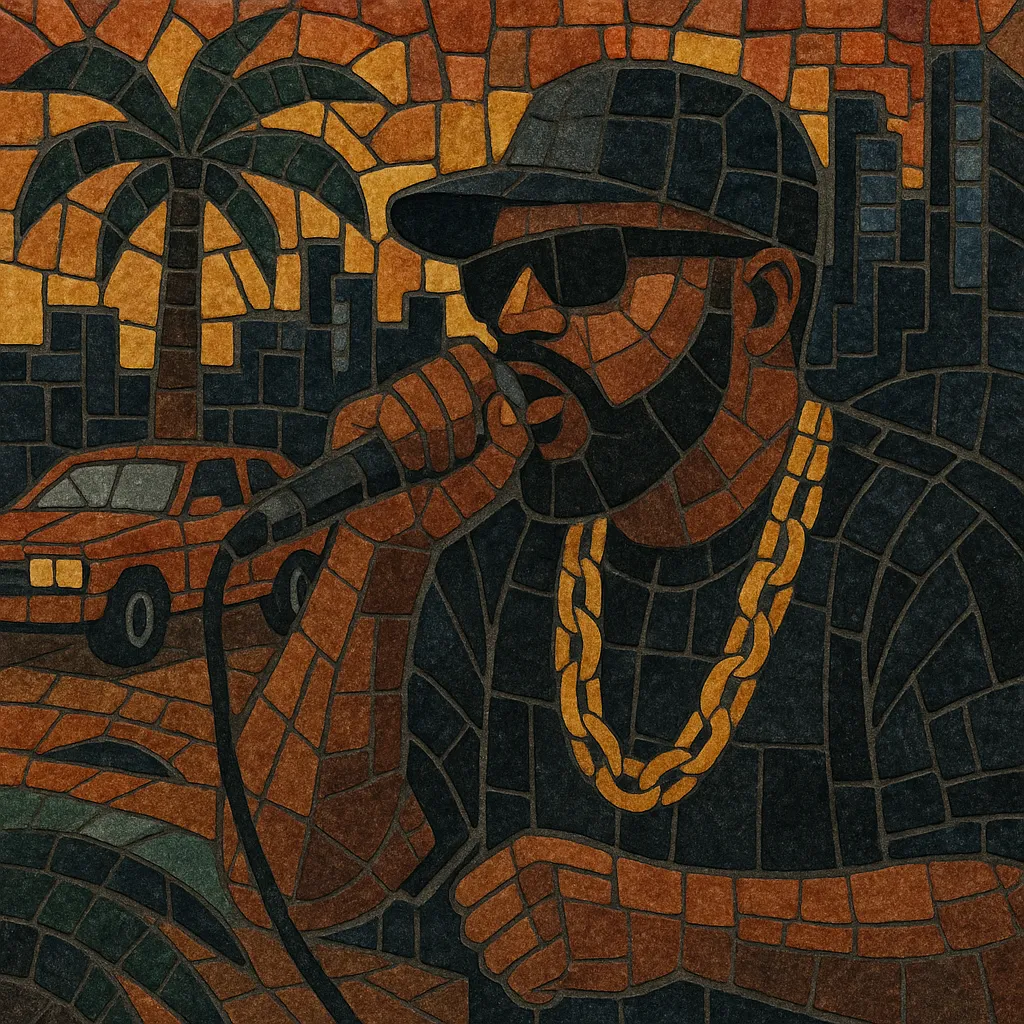
Southern hip hop is a regional style of hip hop that arose across the American South and is defined by heavy 808 bass, syncopated drum programming, and a distinctive Southern drawl and slang. It blends club-ready rhythms with storytelling about regional pride, street realities, and everyday hustle.
Sonically, it ranges from the minimalist, chant-driven energy of New Orleans bounce to the eerie, lo-fi darkness of early Memphis tapes and the syrupy, slowed textures of Houston’s chopped-and-screwed technique. In Atlanta, it incubated trap’s rolling hi-hats and sub-bass, while Miami pushed party-forward, bass-saturated tracks.
The genre emphasizes powerful low end, catchy hooks, and call-and-response energy, and it fostered a strong independent label culture (No Limit, Cash Money) that shaped the modern rap business.
Southern hip hop coalesced in the late 1980s as artists outside New York and Los Angeles forged their own identity. Miami’s bass scene (2 Live Crew) emphasized booming 808s and party chants, while Houston acts like the Geto Boys brought gritty narratives with a distinctly Southern cadence. These scenes, alongside burgeoning movements in Memphis and New Orleans, established the South’s production aesthetics and regional voice.
The 1990s saw the South diversify and command national attention. Houston’s DJ Screw popularized the chopped-and-screwed style, slowing tracks to molasses tempo and “chopping” transitions. Memphis crews (Three 6 Mafia) crafted dark, horror-tinged, lo-fi beats that later informed internet-era phonk. New Orleans bounce, built on the "Triggerman" break, drove high-energy, call-and-response club anthems. In Atlanta, OutKast and Goodie Mob (Dungeon Family) fused funk, soul, and futurist concepts, cementing artistic credibility for the region, while Texas duo UGK defined country-rap realism.
By the early 2000s, Southern hip hop dominated U.S. charts. Crunk (Lil Jon) brought explosive, chant-heavy club tracks; No Limit (Master P) and Cash Money (Juvenile, Lil Wayne) demonstrated the power of Southern indie label empires. Atlanta’s T.I. and peers formalized the sound that would become trap, with hard 808s, rapid-fire hi-hats, and uncompromising street narratives.
Trap, born from Southern hip hop, became the world’s default rap and pop rhythm, influencing R&B (trap soul) and EDM (EDM trap). Memphis tape aesthetics resurfaced online as phonk. Meanwhile, Southern artists continued to innovate—balancing chart ambitions, experimental production, and deeply local stories—while their business models and sonic templates shaped global hip hop.

